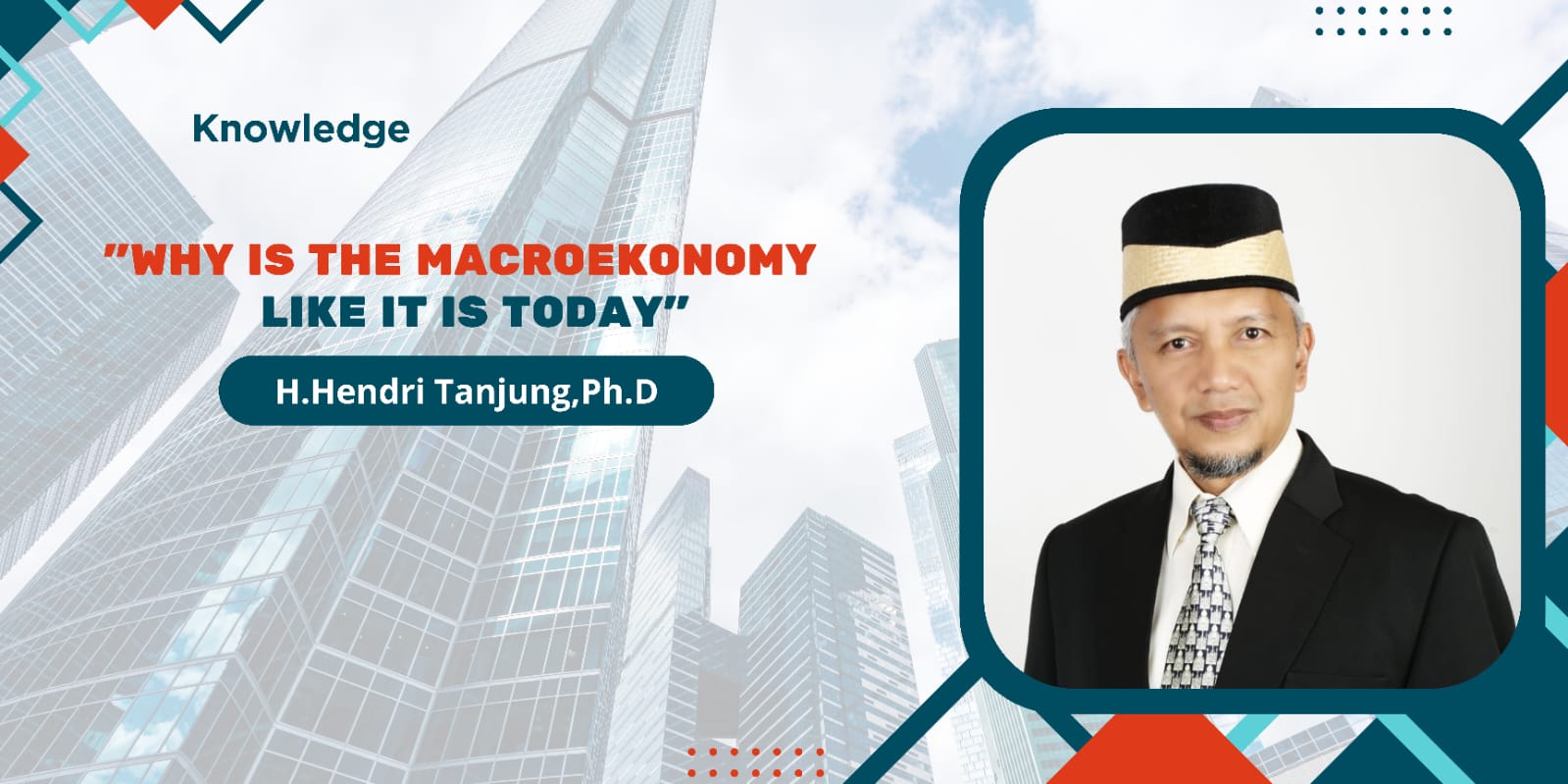This is a question that bothers economists when studying macroeconomics. This is a question to be answered by looking at several problems in macroeconomics to ‘Islamize’ the macroeconomics. This is also the question that inspired Hendri Tanjung, Ph.D and Professor Hermanto Siregar, Ph.D to write a book entitled “Macroeconomics An Evolutionary Approach” which was published by IPB Press September 2012 in English.
In his comments on this book, Professor Bambang P.S. Brodjo Negoro, Ph.D, general chairman of the Association of Indonesian Islamic Economic Experts (IAEI), former director of IRTI Islamic Development Bank Jeddah, who is also Head of the Fiscal Policy Agency of the Ministry of Finance of the Republic of Indonesia, said: “Macroeconomics is a dynamic science, always changing along with the development of time. reflects changing trends in economic affairs, the environment, the world economy, and society at large. In line with this, this book uses an evolutionary approach to cover macroeconomic developments. The book is comprehensively written by renowned economists making it effective as a teaching instrument, useful as a guide for policymakers and their advisors, and essential reading for students with a keen interest in macroeconomics.”
The title of the book is “Macroeconomics An Evolutionary Approach”. This book contains a comprehensive survey of economic thought, from the era before Adam Smith to the current era. The important question to be answered in this book is “How does macroeconomics function in a country?”
This book starts with an exposition of classical economics, Keynesian, Neo-classical-Keynesian (Synthesis), Monetarism, New Classical Revolution, to New Macroeconomics. The first three paradigms applied Hegelian theory, which later became orthodox. These three paradigms replace each other. The last three paradigms are further improvements to the first three paradigms but are still within the framework of development of the first three paradigms, not revolution. This book discusses a collection of markets involved in general equilibrium, namely the labor market, money market, goods market, and bond market. The way it is presented is also unique, namely discussing the transfer from one paradigm to another.
This book consists of 9 chapters, starting with an introduction from the dean of the Faculty of Economics and Management (FEM) IPB and the author’s introduction. Chapter one discusses revolutions in economics, starting from the first revolution: classical economics, then Keynesian/Keynesian economics, monetarist, and the New Classical Revolution (NCR). Chapter two discusses classical economics, covering the supply side, demand side, a complete model of classical economics, implications of the classical system, and criticism of the classical system. Chapter three discusses the Keynesian model, covering the supply side and demand side of the hydraulic model, and Appraisal. Chapter four discusses Keynesian Neoclassical (Synthesis) covering format models, Pigou’s critique of Keynes, quasi-theoretical and empirical objections to the Pigou effect, general forms of synthesis, and an examination of the neutrality of money.
Chapter five discusses the General Disequilibrium Model, covering the basic characteristics of Leijonhufvud and Clower, Synthesis, as well as the central theme: the case of Patinkin and Clower. Chapter six discusses Monetarism which begins with the story of the emergence of the monetarism school, speculative demand, the Substitution Effect, and the Income Effect as well as empirical evidence about Monetarism. Chapter Seven discusses the New Classical Revolution (NCR) with its big theme Rational Expectation. This chapter discusses policy failures and expectations, the Keynesian Rejection (Lipsey, Friedman, Phelps, Lucas, Sargent, and Wallace’s reaction function), and the implications of the NCR.
Chapter eight discusses New Macroeconomics, covering four principles of new macroeconomics, three dimensions of which focus on post-NCR research (Rational Expectations, Policy Irrelevance, and New Keynesian Model Reconstruction). The final chapter discusses the Rival theory of the Business Cycle which includes real business cycles, New Keynesian, and monetary business cycle theories, as well as open economy models.
Consisting of 266 pages, containing 95 pictures and graphs, dozens of equations, equipped with a name index and subject index, this book is intended to fulfil the need for a macroeconomics textbook for students in the field of economics as well as professionals.
The authors of this book are a panel of economists who have been involved in macroeconomics not only in theory but also in practice. Hendri Tanjung is a senior lecturer at Ibnu Khaldun University Bogor, who teaches Macroeconomics at the science management faculty at the International Islamic University Islamabad, Pakistan. Hermanto Siregar, who is a professor of economics at the Faculty of Economics and Management, Bogor Agricultural Institute (IPB), is currently also a member of the National Economic Committee, an economic advisory council to the President of the Republic of Indonesia. Currently, he is also commissioner of Bank BRI, the largest bank in Indonesia.
Professor Bustanul Arifin, professor of agricultural economics at the University of Lampung (UNILA) and senior economist at the Institute for Development of Economics and Finance (INDEF) Jakarta, appreciated this book by saying “This textbook provides a comprehensive and systematic treatise on macroeconomics in an easily accessible form and read. The authors have shown that the entire scope of modern theory and some of the empirical evidence of macroeconomics can be brought into classroom teaching and public policy discussions. This book is highly recommended for academics, the business world, and policymakers in both developed and developing countries.” Wallahu a’lam.
Author: H Hendri Tanjung, Ph.D
Source: in the Iqtishodia Islamic Economics Journal, Republika, Thursday, 23 October 2012.

